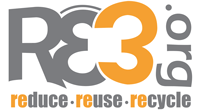
On the fourth morning of our packing adventure, I woke up while the sky was just beginning to turn pink, and the sun had not yet evaporated the dew on the grass. I knew what had to be done today. We had to clean out the utility shed in the backyard.
This 100 square-foot shed housed an array of gardening tools, flower pots, scrap wood, window screens, a riding lawnmower, a wheelbarrow, fertilizers and pesticides. All of it had to be pulled out and either packed up or disposed of.
After eating my puffed wheat and milk from the coffee pot (we absent-mindedly packed all the dishes the day before), I put on a face mask, goggles and gloves. Dad and I made our way to the shed, dragging cardboard boxes and plastic trash bags behind us. Dad opened the squeaky door, and instantly the reek of chemicals filled our noses.
I remembered this same smell when, as a kid, I would go into the utility shed with my grandfather to pull out the gardening tools. I didn’t realize it then, but now I had a better understanding of just what was emitting this aroma. The shed was full of pesticides, herbicides and other poisons my grandparents used to maintain the “perfect” lawn and garden. Their 1.5 acre green lawn had always been the envy of the neighborhood.
Inside the shed, the stream of light coming through the one small window illuminated the thick dust particles in the air. The thin wooden floor creaked and bowed slightly as we carefully stepped around the riding lawnmower. The back wall of the shed was lined with the orangey-brown kitchen cabinets that had been replaced by updated white cabinets in the kitchen 10 years before. From these cabinets, I began pulling out bottles filled with mystery liquids and boxes filled with powders. One was labeled Rat Poison, another labeled Hyvar and another labeled Kills Crabgrass. I was especially humored and horrified by the gallon jug labeled Kills Everything.
Then, I opened a cabinet back in the corner of the shed and placed my gloved hand on a brown paper bag rolled closed at the top. I gasped when I read the handwritten label DDT. From my environmental courses in college, I had come to view DDT as the poster child of killer pesticides. To me, holding it in my hands was as frightening as petting an angry copper head.
The general use of DDT in the United States was outlawed in 1972 after years of pressure from the environmental movement. The widespread use of DDT as an insecticide began during World War II in a successful effort to protect soldiers from insects carrying malaria and typhus. Because of its effectiveness at killing insects, DDT was used in agricultural and commercial applications during the late 1940s. By the time it was outlawed, 675,000 tons had been spread across the American landscape (EPA, 1972).
Among the reasons this pesticide was outlawed was the devastating effects DDT had on bird populations. Studies revealed that birds contaminated with DDT produced egg shells that were too thin, resulting in the eggs breaking before the baby birds were ready to hatch. One of DDT’s most influential adversaries was Rachel Carson who warned against DDT’s devastating environmental effects in her book Silent Spring published in 1962 (Ehrlich, Dobkin & Wheye, 1988).
To think, for years, my grandparents spread this poisonous powder all over their property in an effort to have a green lawn and fertile garden. Well, I couldn’t worry about that now. I had to put my mind to the proper disposal of all this hazardous material. My sister Jill looked up the number for the Huntsville landfill online and gave them a call.
“Uh, yes, we have a bunch of containers of pesticides,” Jill began. “We were wondering how we should properly dispose of them. One of the bags actually contains DDT.”
There was a long pause as the person answering the phone put Jill on hold to discuss it with her supervisor. “How much DDT do you have?” asked the woman when she came back on the line.
“Oh, just a small paper bag full,” Jill answered.
They told us we could bring all our poisons out to the Handle With Care household hazardous waste facility run by the Huntsville Solid Waste Disposal Authority. While the collection facility was located at the landfill, the Handle With Care program ensured that the hazardous waste would be diverted from landfill disposal. So, we packed all the bottles, boxes and bags into the back of the Subaru, and with our heads hanging out the windows for fresh air, we drove our hazardous load out to the landfill.
Check back next week when I tell the story of our frustrating journey to the landfill.
References
Ehrlich, P., Dobkin, D., Wheye, D. (1988). DDT and Birds. The Birder’s Handbook. Retrieved from
http://www.stanford.edu/group/stanfordbirds/text/essays/DDT_and_Birds.html
Environmental Protection Agency. (1972). DDT Ban Takes Effect Press Release. Retrieved from



No comments:
Post a Comment